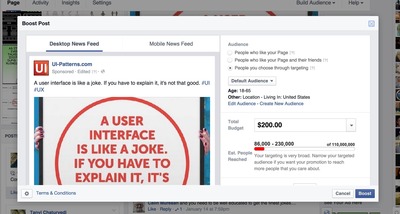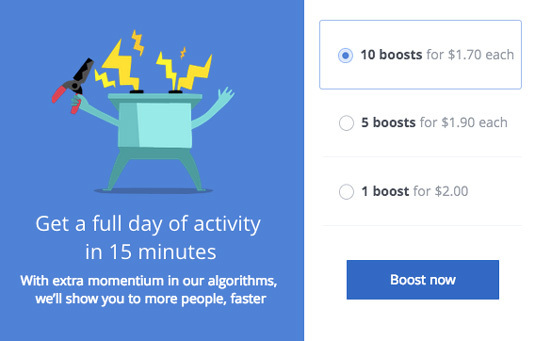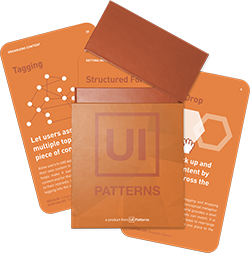Pay To Promote
Design Pattern
Alternate titles: Boost post.
Problem summary
The user wants to pay to prioritize own content above the regular content feed in order to gain increased reach and traction.
Example
Usage
- Use when you want to provide users and businesses a chance to skip the content prioritization algorithm to get in front of the desired audience.
- Use when you want to provide users an opportunity to elevate content on feeds for a fee
This card is part of the UI Patterns printed card deck
A collection of 60 User Interface design patterns, presented in a manner easily referenced and used as a brainstorming tool.
Get your deck!Solution
Let users pay to promote their content
On social platforms like Quora, Twitter, OKCupid, and LinkedIn, users can post content. Allow users to boost visibility of their own content by paying money. This form of advertising allows users to gain traction while maintaining a look and feel native to the platform.
Sites like Quora and Facebook allow users to boost their posts by paying money, which in return gives them greater visibility in the content feed above the regular non-paid content.
Dating-sites like OKCupid allow users to boost their profile in views. LinkedIn does the same albeit as part of a paid membership plan rather than by individual content like on Facebook.
Discussion
The Pay to Promote pattern is part of the native advertisement concept, which blends regular content with paid content. The two look the same with the only difference of the paid kind having a “Sponsored” label or “Advertisement” label.
More examples of the Pay To Promote pattern See all 2 example screenshots

User Interface Design Patterns
- Forms
- Explaining the process
- Community driven
- Tabs
- Jumping in hierarchy
- Menus
- Content
- Gestures
- Tables
- Formatting data
- Images
- Search
- Reputation
- Social interactions
- Shopping
- Increasing frequency
- Guidance
- Registration
Persuasive Design Patterns
- Loss Aversion
- Other cognitive biases
- Scarcity
- Gameplay design
- Fundamentals of rewards
- Gameplay rewards

